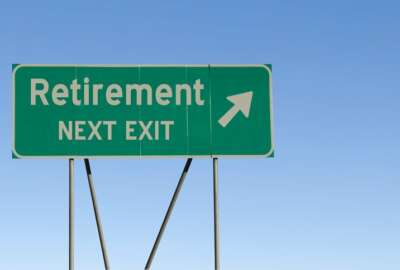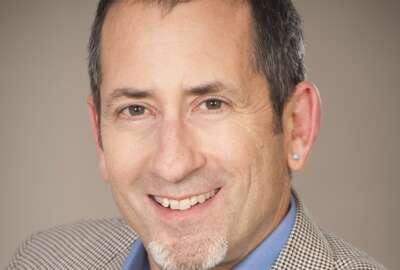
Phased retirement participation still vastly short of initial predictions
A total of 417 federal employees have participated in the phased retirement program since the Office of Personnel Management first gave agencies the green light to...
Now roughly six years since Congress first approved it, just more than 400 federal employees have applied to the government’s once-highly-anticipated phased retirement program.
As of Aug. 1, a total 417 employees have opted into the phased retirement program at their agencies, according to Office of Personnel Management data provided to Federal News Radio. Of that total, 222 people have opted into the program, completed their agency’s requirements and have fully retired.
In tracking the program, OPM refers to the latter group of 222 employees as “composite” retirements.
Of the 222 retirees, 125 were participants in the Federal Employee Retirement System (FERS) while 97 employees were part of the Civil Service Retirement System (CSRS).
Interest and uptake in the phased retirement program is surprising — and significantly lower than congressional and federal employee groups’ initial expectations. Members of Congress and other stakeholders originally saw the program as a potentially valuable workforce planning tool to more effectively manage the transfer of institutional knowledge.
The program was also supposed to combat “brain drain” as more employees leave for retirement. The Office of Management and Budget in recent months has said roughly 60 percent of the federal workforce is eligible to retire within the next 10 years.
When asked whether it still saw the phased retirement program as a powerful knowledge management tool for the federal workforce, an OPM spokesman told Federal News Radio the question would be best directed to individual agencies.
To be clear, participation in the phased retirement program has increased every year since OPM first gave agencies the green light in November 2014 to begin accepting applications from their employees for the program.
About 90 employees had signed up for phased retirement as of August 2016. Nearly a year later, about 300 employees had applied for the program, according to OPM data provided to Federal News Radio.
See a breakdown of the number of phased retirees at agency as of Aug. 1, 2018. “Total phased retirements” refers to the number of employees who have opted into the program. “Composite retirements” designates the participants who have fully retired from the program.
(Source: Office of Personnel Management)
Congress first signed off on the phased retirement program back in 2012.
After OPM released regulations on the new program back in 2014, individual agencies were responsible for issuing and implementing their own specific guidelines on phased retirement. But many agencies were slow to unveil them, and some, like the Social Security Administration, have opted not offer phased retirement to their employees.
The Homeland Security Department, the third-largest federal agency with 240,000 employees, notably, isn’t offering phased retirement either, according to OPM’s data.
The Education Department and the Office of Personnel Management itself, are also absent from OPM’s list of agencies with data to report on phased retirement.
Though only have 417 total employees who have opted into the program, some agencies appear to have picked up the pace in recruiting employees to phased retirement within the past year.
The Veterans Affairs Department, which started using the program at some point between 2016 and 2017, had 20 employees opt in as of Aug. 1, 2018. Twelve of them had completed the program and retired, according to OPM’s data.
At the time of Federal News Radio’s request last summer, just five VA employees had opted into the phased retirement program.
Agencies such as the departments of Agriculture and Interior, along with the Environmental Protection Agency, NASA and Smithsonian, have steadily had more employees enter phased retirement over the past few years.
Phased retirement far short of expectations
But the most recent data is a far cry from what the Congressional Budget Office originally estimated back in 2012 when it first scored the program. CBO had projected 1,000 federal employees at any given time would enter into phased retirement per year.
“Phased retirement should be a win-win for the federal government,” Rep. Gerry Connolly (D-Va.) said in a statement to Federal News Radio. “With nearly a third of the federal workforce eligible for retirement and 45 percent of the workforce over the age of 50, we must find an effective and efficient way to transition the next generation of federal workers into service. Rather than denigrate federal employees, Congress should work with stakeholders to look at how we can make more robust use of this program.”
Connolly, who serves as ranking member of the House Oversight and Government Reform subcommittee on government operations, was a vocal supporter of the Federal Employee Phased Retirement Act.
Some federal employee groups have said the program in its current form offers little flexibility, because it doesn’t let phased retirees tailor their workload to current needs or their agencies’ priorities.
Retirement-eligible federal employees who sign up for the program agree to work part-time in their positions while collecting half their salary and half their accumulated retirement annuity. Once approved, phased retirees must dedicate part of their working hours — 20 percent in some cases — to mentoring other employees who plan to take over their job responsibilities once they leave.
When Federal News Radio asked OPM for more insight into the current state of the phased retirement program, the agency offered little detail.
OPM did not predict or have expectations of the program when it was first implemented back 2014, an agency spokesman said when asked about phased retirement participation.
In addition, agencies haven’t given OPM specific feedback about phased retirement or how the program could be improved, the spokesman said.
Copyright © 2025 Federal News Network. All rights reserved. This website is not intended for users located within the European Economic Area.
Nicole Ogrysko is a reporter for Federal News Network focusing on the federal workforce and federal pay and benefits.
Follow @nogryskoWFED






